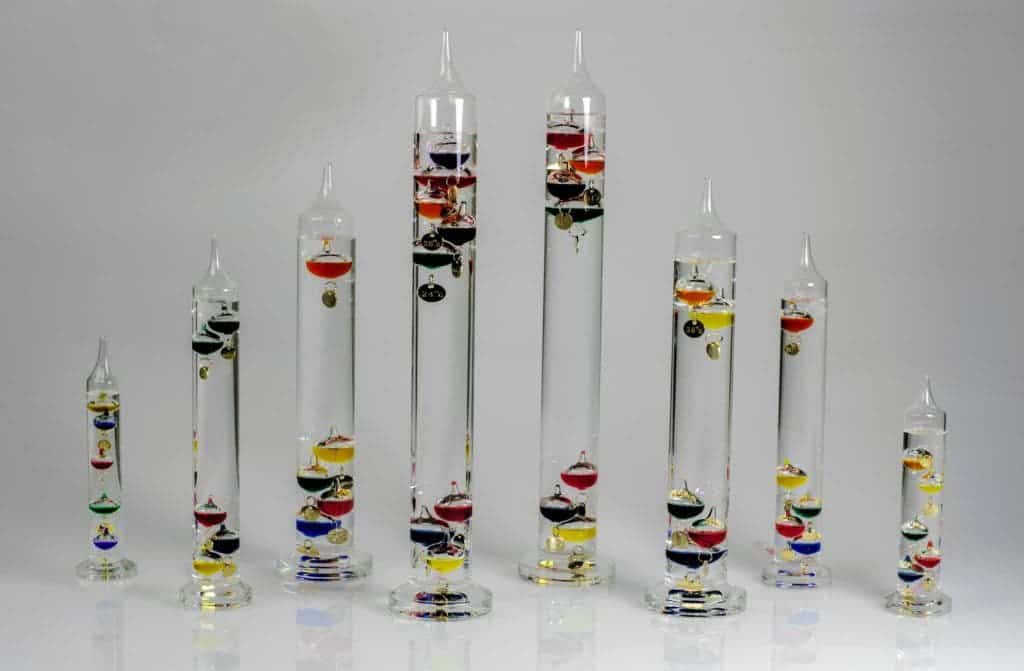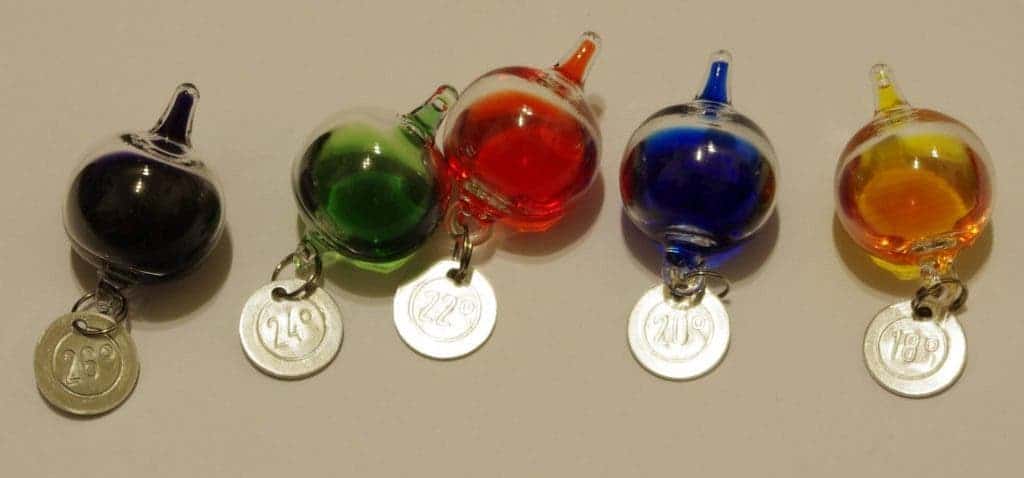
There’s no more beautiful way to measure the temperature than using a Galileo thermometer. This fairly accurate instrument is based on the thermoscope invented by Galileo Galilei in the early 17th century. Unlike your typical mercury-in-glass thermometer that’s basically a narrow bulb made with mercury that expands and contracts, the Galileo thermometer is far more complex. It’s comprised of multiple glass spheres each filled with a colored liquid mixture which often contains alcohol but can even be simply water with food coloring added. These floating balls sink or float inside the surrounding water over time and temperature ever so slowly and gracefully.
How a Galileo thermometer works
Each bubble has a metal tag attached to it that indicates temperature, which also serves as a calibrated counterweight. Each tag, in turn, has a weight that’s slightly different from the others. The bubbles themselves, typically hand-blown glass, are each different in size and shape but they’re all calibrated so they have the same exact density. It’s the weighted tags that make each bubble’s density vary slightly. Even so, the density of all the bubbles is very close to that of the surrounding water.
When the ambient air surrounding the thermometer increases or decreases in temperature, so will the temperature of the water that surrounds the glass bubbles. As the temperature of the water rises or falls, the liquid will either expand or contract, respectively, varying the density in the process as well. Specifically, water density decreases as its temperature increases. You can trust experience in this case. If you’ve ever dived into a lake, you must have felt how cold the water. That’s because closer to the surface, the water is warmer and lighter staying at the top. For our Galileo thermometer, for any given density, some of the bubbles will float while others will sink.

Essentially, the Galileo thermometer operates on the principle of buoyancy, the phenomenon by which objects of greater density than their surroundings sink and less-dense ones float. For instance, the ball marked at 78 degrees F will be just slightly less dense than tube liquid at that temperature, causing it to float. While the ball underneath it, marked and adjusted for 76 degrees will be denser than the tube liquid and will sink.
How to read a Galileo thermometer
A small Galileo thermometer can have 6 degrees (F) of difference between the balls, which introduces a lot of error into the measurement. Larger such instruments have at least a couple of temperature difference between the diver globes. Most cover the temperatures from 68-84F degrees which makes them suitable only for heated/air conditioned indoor locations
To read the ambient temperature on a Galileo thermometer is very easy. What you have to do is simply look at the lowest ball that is floating while ignoring those tags that had sunk to the bottom of the container. It’s those balls that float or are neutrally buoyant that interest us. If there is no bulb floating in the gap between the rising and sunk bulbs, use the lowest bulb from the floating cluster to get the temperature.
The Galileo thermometer is certainly not the most precise instrument in the world but it is certainly clever. Really, I don’t think you’ll find a more attractive way to measure temperature which is why people use them for decorative purposes. You can find a great selection on Amazon.



